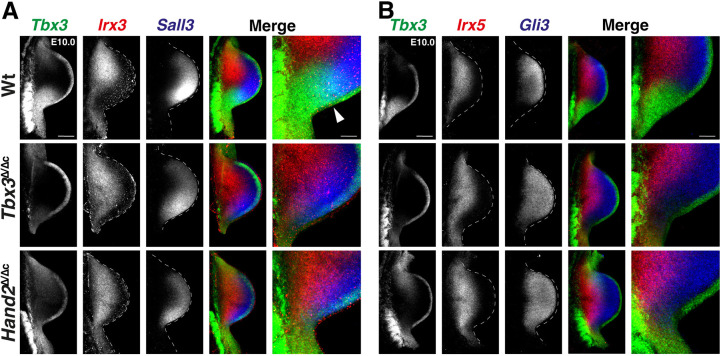Fig. 6.
The essential function of TBX3 in posterior expression boundary formation is independent of HAND2. (A) Colocalisation of Tbx3 (green), Irx3 (red) and Sall3 (blue) in wild-type (Wt), Tbx3Δ/Δc and Hand2Δ/Δc forelimb buds (E10.0, 29-32 somites). n=4 biological replicates were analysed per gene and genotype. White arrowhead points to the region of overlap between Tbx3 (green) and Sall3 (blue) expression. (B) Colocalisation of Tbx3 (green), Irx5 (red) and Gli3 (blue) expression in forelimb buds (E10.0, 29-32 somites). n=3 biological replicates were analysed per gene and genotype. Right-most panels in A and B show enlargements of the posterior-proximal regions. All limb buds are oriented with anterior to the top and posterior to the bottom. Dashed lines delineate the shape of the limb bud. Scale bars: 200 µm (main panels); 67 µm (enlargements).

